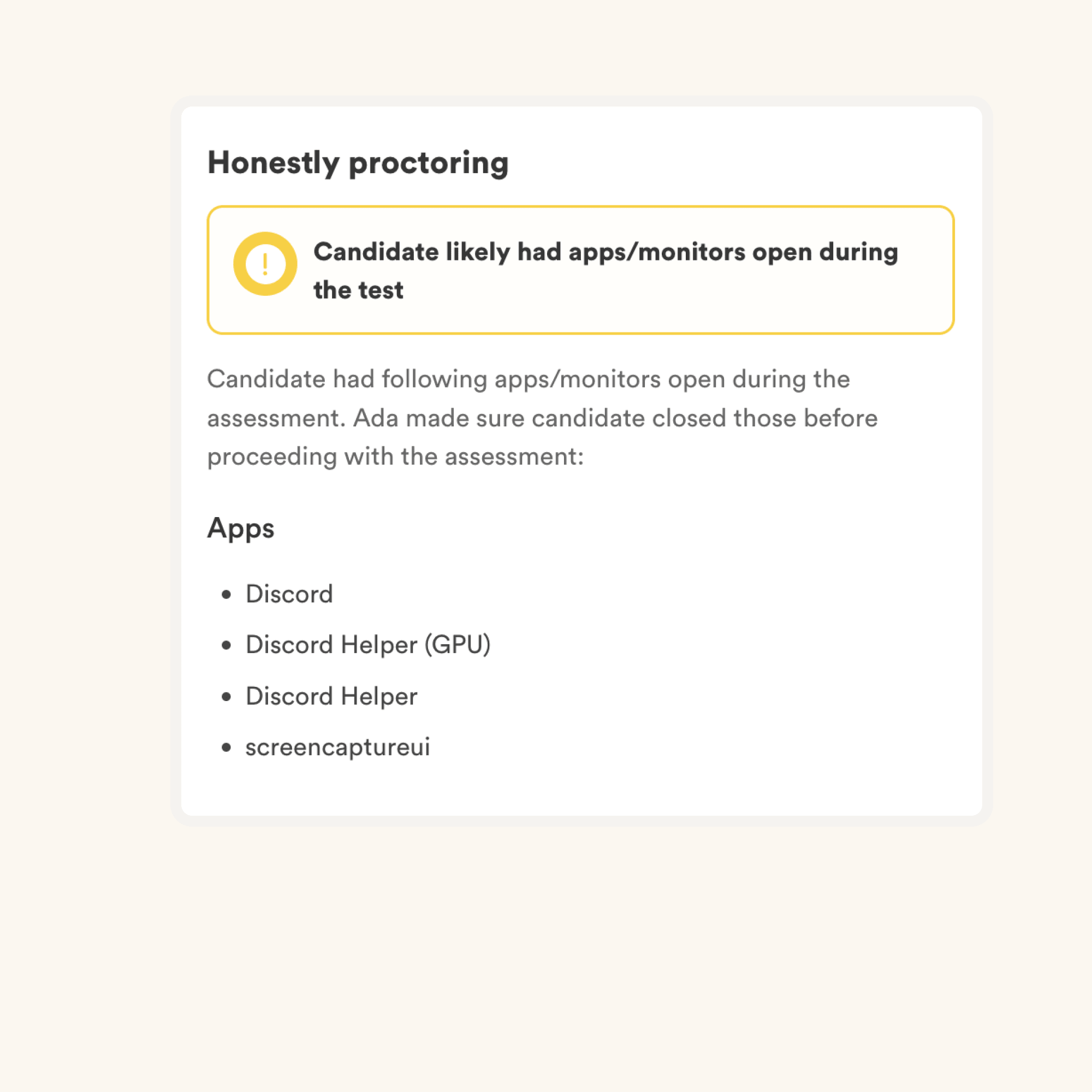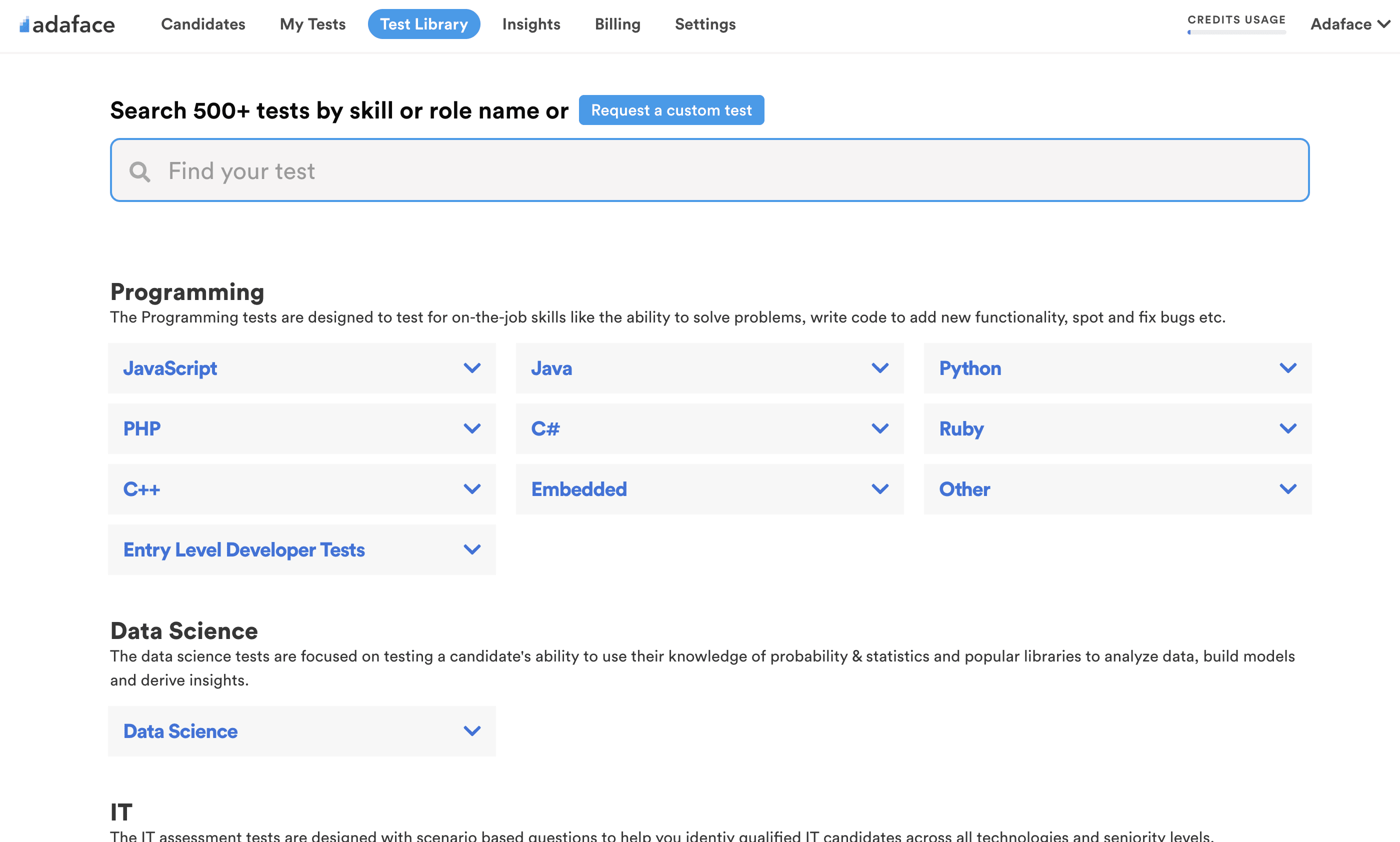Test Duration
25 minsDifficulty Level
Moderate
Questions
- 12 Natural Language Processing MCQs
Availability
Ready to useThe NLP (Natural Language Processing) Online test uses scenario-based MCQs to evaluate candidates on their knowledge of NLP concepts and techniques, such as text classification, information extraction, sentiment analysis, and named entity recognition. The test assesses a candidate's ability to apply NLP techniques to real-world problems and scenarios and design effective NLP models.
Covered skills:
Test Duration
25 minsDifficulty Level
Moderate
Questions
Availability
Ready to useThe Natural Language Processing (NLP) Online Test is designed to assist recruiters and hiring managers in identifying candidates with strong NLP skills from a large pool of applicants. It helps streamline the hiring process by providing an objective assessment of candidates' abilities, reducing the time spent on interviewing unqualified individuals. This test allows you to make informed hiring decisions, ensuring you bring the right talent to your organization.
This test evaluates candidates on their understanding and application of various NLP techniques. It covers areas such as text preprocessing, including tokenization and stemming, and extends to more advanced concepts like sentiment analysis, named entity recognition, and language modeling. The assessment also examines a candidate's knowledge of word embeddings, machine translation, information extraction, text summarization, and topic modeling, providing a detailed view of their NLP skill set.
Use Adaface tests trusted by recruitment teams globally. Adaface skill assessments measure on-the-job skills of candidates, providing employers with an accurate tool for screening potential hires.
We have a very high focus on the quality of questions that test for on-the-job skills. Every question is non-googleable and we have a very high bar for the level of subject matter experts we onboard to create these questions. We have crawlers to check if any of the questions are leaked online. If/ when a question gets leaked, we get an alert. We change the question for you & let you know.
How we design questionsThese are just a small sample from our library of 15,000+ questions. The actual questions on this Natural Language Processing (NLP) Online Test will be non-googleable.
| 🧐 Question | |||||
|---|---|---|---|---|---|
|
Medium
Hate Speech Detection Challenge
|
Solve
|
||||
|
|
|||||
|
Easy
Identifying Fake Reviews
|
Solve
|
||||
|
|
|||||
|
Medium
Sentence probability
|
Solve
|
||||
|
|
|||||
|
Easy
Tokenization and Stemming
|
Solve
|
||||
|
|
|||||
|
Medium
Word Sense Disambiguation
|
Solve
|
||||
|
|
|||||
| 🧐 Question | 🔧 Skill | ||
|---|---|---|---|
|
Medium
Hate Speech Detection Challenge
|
2 mins Natural Language Processing
|
Solve
|
|
|
Easy
Identifying Fake Reviews
|
2 mins Natural Language Processing
|
Solve
|
|
|
Medium
Sentence probability
|
2 mins Natural Language Processing
|
Solve
|
|
|
Easy
Tokenization and Stemming
|
2 mins Natural Language Processing
|
Solve
|
|
|
Medium
Word Sense Disambiguation
|
2 mins Natural Language Processing
|
Solve
|
| 🧐 Question | 🔧 Skill | 💪 Difficulty | ⌛ Time | ||
|---|---|---|---|---|---|
|
Hate Speech Detection Challenge
|
Natural Language Processing
|
Medium | 2 mins |
Solve
|
|
|
Identifying Fake Reviews
|
Natural Language Processing
|
Easy | 2 mins |
Solve
|
|
|
Sentence probability
|
Natural Language Processing
|
Medium | 2 mins |
Solve
|
|
|
Tokenization and Stemming
|
Natural Language Processing
|
Easy | 2 mins |
Solve
|
|
|
Word Sense Disambiguation
|
Natural Language Processing
|
Medium | 2 mins |
Solve
|
With Adaface, we were able to optimise our initial screening process by upwards of 75%, freeing up precious time for both hiring managers and our talent acquisition team alike!
Brandon Lee, Head of People, Love, Bonito
It's very easy to share assessments with candidates and for candidates to use. We get good feedback from candidates about completing the tests. Adaface are very responsive and friendly to deal with.
Kirsty Wood, Human Resources, WillyWeather
We were able to close 106 positions in a record time of 45 days! Adaface enables us to conduct aptitude and psychometric assessments seamlessly. My hiring managers have never been happier with the quality of candidates shortlisted.
Amit Kataria, CHRO, Hanu
We evaluated several of their competitors and found Adaface to be the most compelling. Great library of questions that are designed to test for fit rather than memorization of algorithms.
Swayam Narain, CTO, Affable
The Adaface test library features 500+ tests to enable you to test candidates on all popular skills- everything from programming languages, software frameworks, devops, logical reasoning, abstract reasoning, critical thinking, fluid intelligence, content marketing, talent acquisition, customer service, accounting, product management, sales and more.
The NLP Online Test evaluates a candidate's proficiency in various NLP skills. It is designed for recruiters to assess and identify individuals who have expertise in NLP tasks. This test is beneficial for hiring roles that require robust NLP knowledge.
Yes, recruiters can request a custom test combining NLP with Python skills. Refer to our Python Online Test for more details on how we assess Python capabilities.
The test covers Tokenization, Text Classification, Sentiment Analysis, Named Entity Recognition, Word Embeddings, Language Modeling, Machine Translation, Information Extraction, Text Summarization, and Topic Modeling.
We recommend using the NLP Online Test as a pre-screening tool. Include the test link in your job post or directly invite candidates via email. This enhances your recruitment efficiency by identifying skilled candidates early.
Key tests in the Data Science category include:
Yes, absolutely. Custom assessments are set up based on your job description, and will include questions on all must-have skills you specify. Here's a quick guide on how you can request a custom test.
We have the following anti-cheating features in place:
Read more about the proctoring features.
The primary thing to keep in mind is that an assessment is an elimination tool, not a selection tool. A skills assessment is optimized to help you eliminate candidates who are not technically qualified for the role, it is not optimized to help you find the best candidate for the role. So the ideal way to use an assessment is to decide a threshold score (typically 55%, we help you benchmark) and invite all candidates who score above the threshold for the next rounds of interview.
Each Adaface assessment is customized to your job description/ ideal candidate persona (our subject matter experts will pick the right questions for your assessment from our library of 10000+ questions). This assessment can be customized for any experience level.
Yes, it makes it much easier for you to compare candidates. Options for MCQ questions and the order of questions are randomized. We have anti-cheating/ proctoring features in place. In our enterprise plan, we also have the option to create multiple versions of the same assessment with questions of similar difficulty levels.
No. Unfortunately, we do not support practice tests at the moment. However, you can use our sample questions for practice.
You can check out our pricing plans.
Yes, you can sign up for free and preview this test.
Here is a quick guide on how to request a custom assessment on Adaface.












